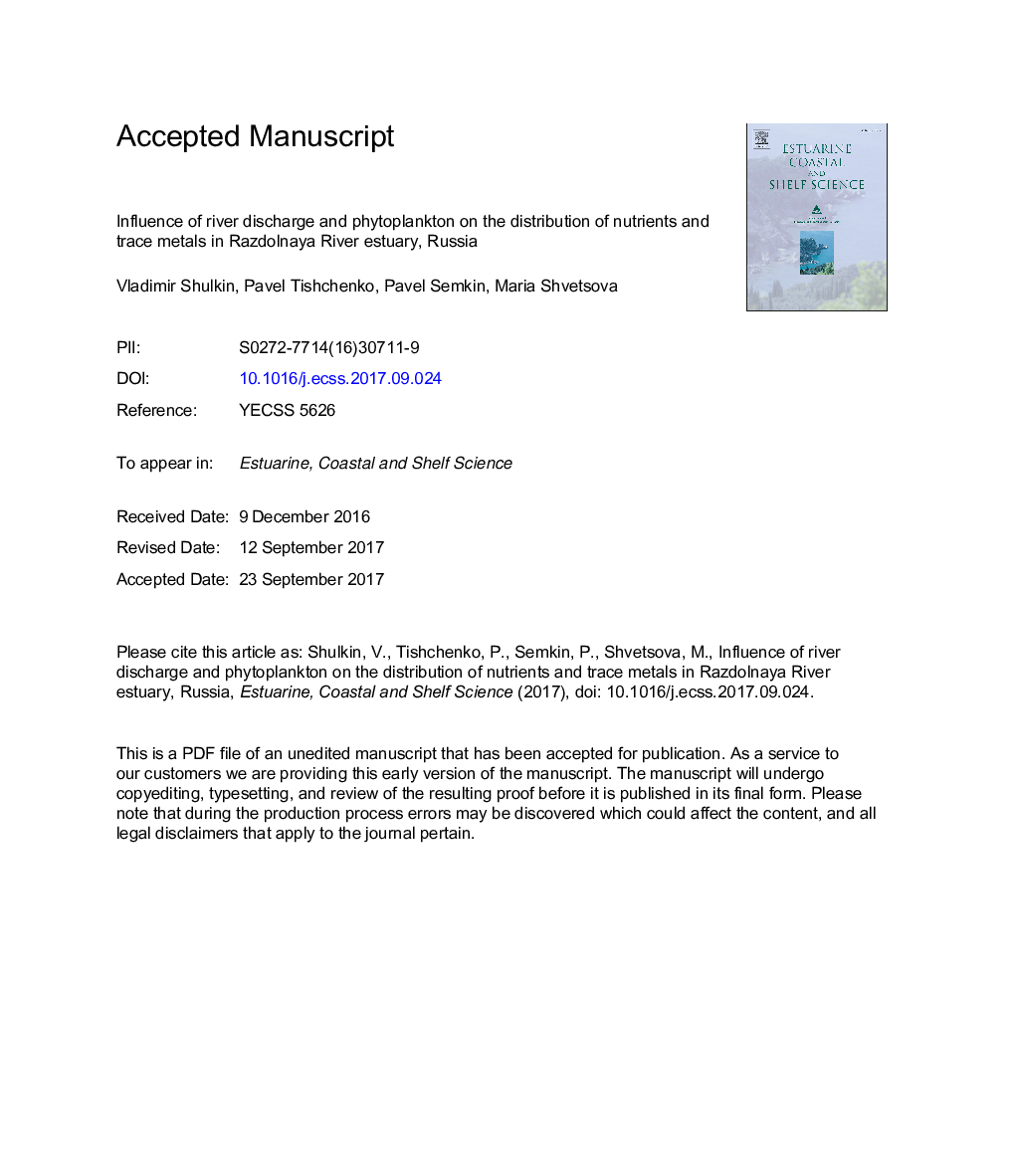| Article ID | Journal | Published Year | Pages | File Type |
|---|---|---|---|---|
| 10223843 | Estuarine, Coastal and Shelf Science | 2018 | 27 Pages |
Abstract
The medium-sized Razdolnaya River estuary in the Sea of Japan was investigated to elucidate the relative significance of river discharge and phytoplankton cycle impacts on the distribution of nutrients and trace metals along salinity gradient. Seasonal variations of river discharge determine the water stratification, extent of the brackish water plume, and flushing time in an estuary. Although the distribution of nutrients is influenced by these variables, seasonal changes of phytoplankton biomass seem to be an important factor for directly determining the changes in the concentrations of dissolved nitrogen (DIN) and dissolved inorganic phosphorus (DIP) along salinity. The distribution of DSi is less dependent on biomass variability due to excess dissolved silicon in the river waters compared with the Redfield ratio. Although dissolved Fe at high river discharge is several times greater than dissolved Fe at low discharge, a nonlinear decrease due to the flocculation of colloids at salinity levels less than 5 psu occurs regardless of discharge and phytoplankton biomass. Dissolved Mn is a trace metal that is dependent on the seasonal change of the phytoplankton cycle. The combination of reduced river discharge and elevated phytoplankton biomass causes hypoxia in the near bottom waters of the stratified inner part of the Razdolnaya R. estuary and seasonal hypoxia, which is regularly observed in the bottom waters of the outer seaside part of the estuary. The increase in dissolved Mn, Ni, Zn, Fe and all nutrients, with the exception of DIP, was observed in oxygen-depleted waters of the inner estuary due to the destruction of plankton and fluxes from sediments. Hypoxia in the outer estuary is accompanied by an increased concentration of all nutrients, whereas the release of dissolved Fe and Mn is less pronounced. The reasons for the asymmetry in the different parts of the hypoxic estuarine zones are discussed.
Related Topics
Physical Sciences and Engineering
Earth and Planetary Sciences
Geology
Authors
Vladimir Shulkin, Pavel Tishchenko, Pavel Semkin, Maria Shvetsova,
